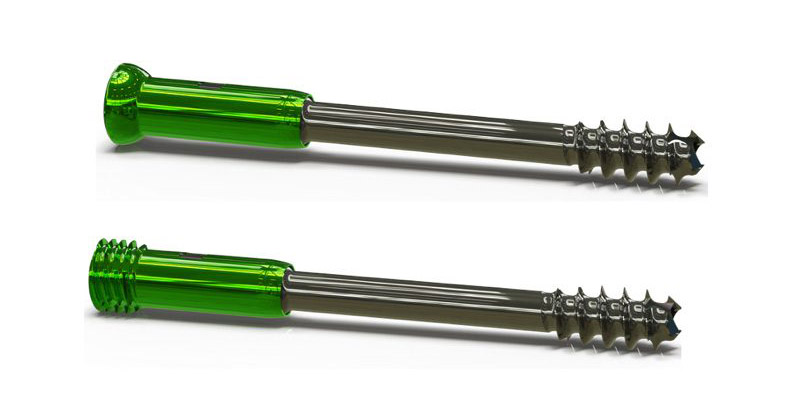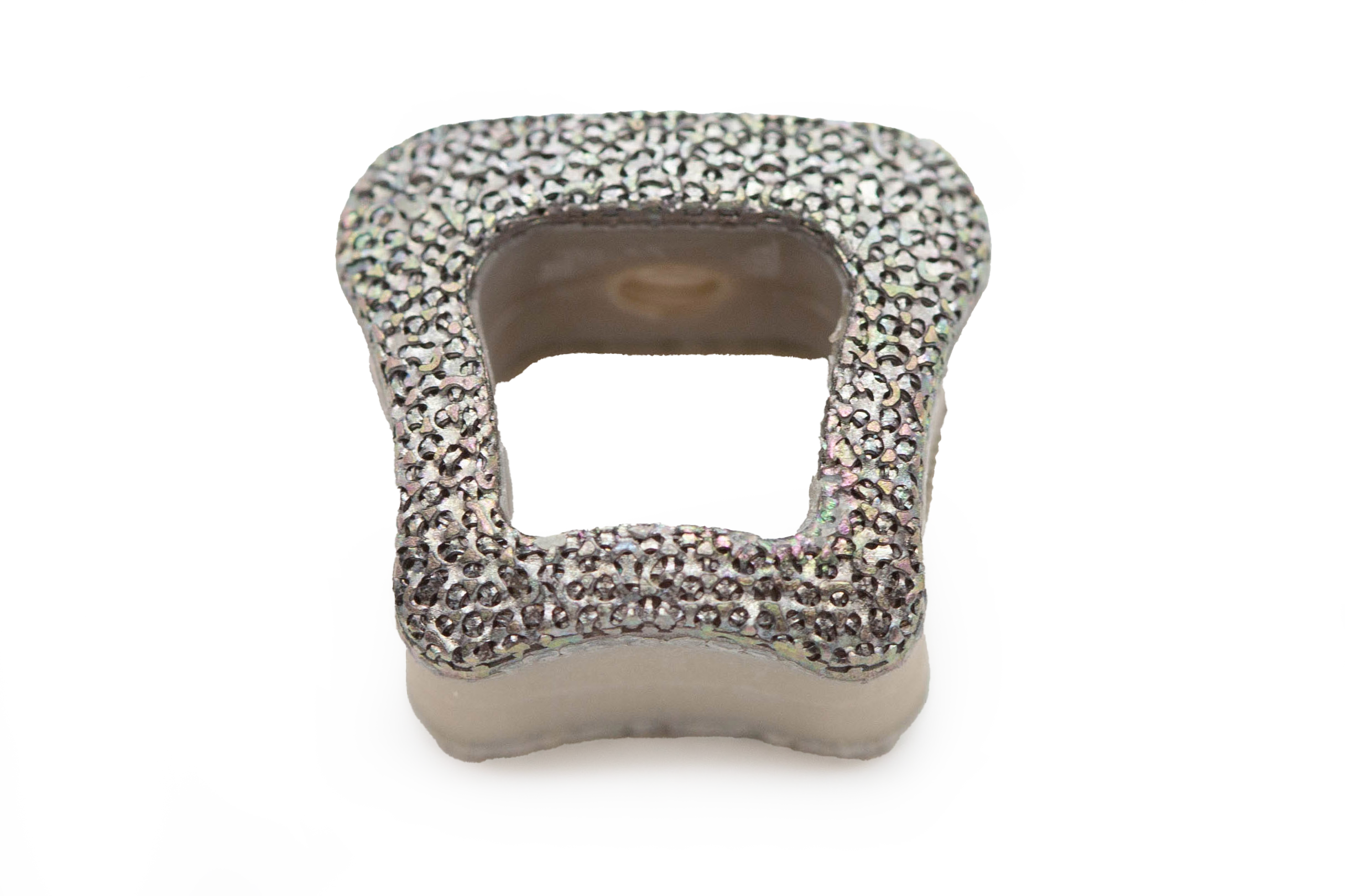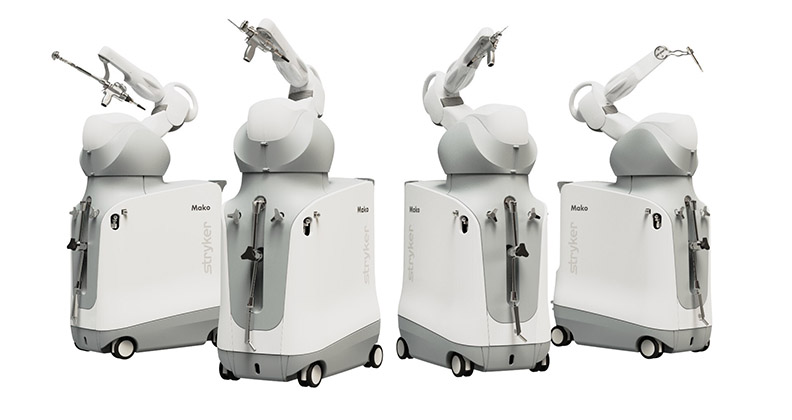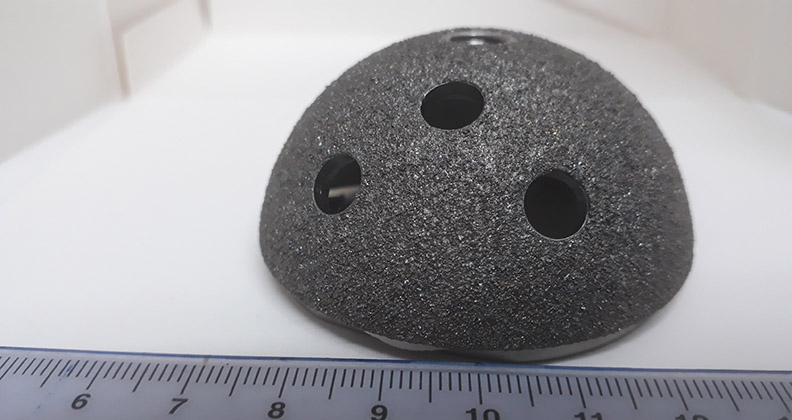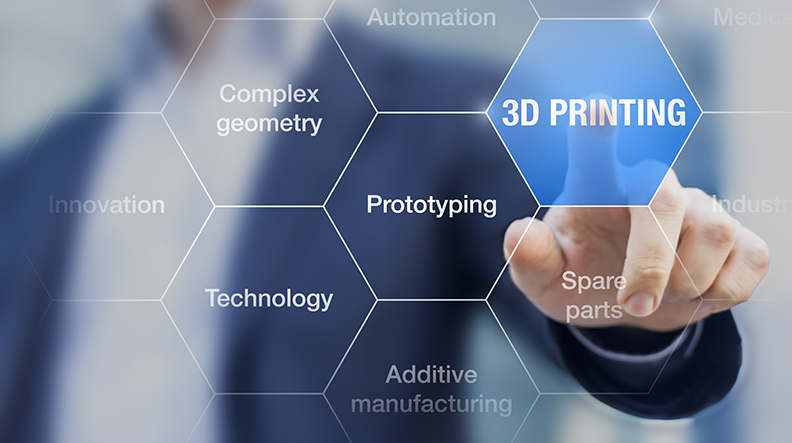
Additive manufacturing has revolutionized the orthopedic industry by providing new ways to produce implants, instruments and bone scaffolds.
The potential of the technology can be found in the production of spine implants, which accounted for nearly 70% of 3D-printed implants cleared by FDA in the first half of last year. It can also be found in the momentum behind cementless total knee replacements performed with 3D-printed implants, which reportedly provide better initial fixation than cemented components. Cementless knee replacement surgery is also faster to perform, an appealing factor as more cases move to ambulatory surgery centers.
“There are significant opportunities in additive manufacturing for early-stage companies that focus on the surgery center market and provide implants for cementless knee solutions,” said Brian McLaughlin, President of ARCH Additive.
However, sales of cemented total knee implants still outpace cementless systems by a wide margin, in part because most big orthopedic companies don’t have the large-scale manufacturing capabilities needed to support growth in additive manufacturing.
It’s a space in the industry that’s ripe for the taking, according to McLaughlin, who has a broad range of additive manufacturing experience at OEMs, contract manufacturers and manufacturing solutions companies. He pointed to the need for 3D-printed femoral components of knee implants, hip stems, shoulder stems and augments to the glenoid vault as low-hanging fruit for orthopedic manufacturers to target.
“From an implant perspective, Stryker is the only company that has made a significant investment in additive manufacturing,” McLaughlin said. “They have invested half a billion dollars to establish a presence in the market. While other companies have entered the market through acquisitions, Stryker has built its own additive manufacturing capabilities.”
McLaughlin said several challenges need to be addressed before additive manufacturing reaches its full potential in orthopedics. Surgeons and patients need to be educated on the benefits of 3D-printed devices. OEMs must also provide more resources to support the use of electron-beam melting (EBM) and laser-based manufacturing, the primary powder-bed fusion technologies used to create three-dimensional objects from digital designs.
A Tale of Two Methods
EBM is used to manufacture complex, high-strength orthopedic implants with excellent mechanical properties, such as hip and knee implants. It can produce fully dense titanium alloys, which are ideal for implants due to their biocompatibility and resistance to corrosion.
The platform, which operates at about 8,000 meters per second, works much faster than lasers. It also operates under high vacuum and at elevated temperatures just below the melting point of the material, resulting in devices with good working properties coming out of production. EBM gets products to market twice as fast as laser platforms, according to McLaughlin.
In contrast, laser manufacturing — such as direct metal laser sintering, selective laser sintering and selective laser melting — is done in an atmospheric environment, requiring post-heat treatment to improve the material properties of the devices that are produced.
McLaughlin referred to the 3D printing of 54 parts needed to produce 54mm acetabular cup implants to highlight other key differences between the use of EBM and lasers.
EBM allows for the stacking of parts and the use of the build chamber’s entire volume, meaning the 54 components could be produced in a single run. Manufactured parts are not welded to build plates, and the material properties of parts removed from machines exceed ASTM standards (F2924, F3001) for grade 5 and titanium powder.
McLaughlin said that parts produced on EBM can be shipped for secondary machining in four days after the powder recovery process. Hot isostatic pressing (HIPing), which is used to remove defects and increase the material properties after production, is application specific and considered only to strengthen materials in high-fatigue components.
Manufacturing 54 parts with lasers would require back-to-back builds. Three additional steps follow the production: post-heat treatment to improve the overall properties of the produced parts; HIPing to remove defects and increase the material properties; and wire EDM to cut the parts off the build plates.
“Laser manufacturing requires significantly more time and five set-ups compared to a single set-up on EBM,” McLaughlin said. “EBM takes four days to process 54 parts and send them to secondary machining at a reduced cost compared to laser. That results in a much shorter time to market.”
EBM and laser also differ in the microscopic surface resolution they create on parts without the need for secondary processing. EBM provides more surface roughness than laser, which promotes bone in-growth, according to McLaughlin. “The microroughness that EBM provides at the bone interface is truly unique as a difference maker for the technology,” he said.
A smoother surface finish provided by laser could be more suitable for implants that don’t require bone in-growth and interact with soft tissue, such as joint replacement components, McLaughlin said.
Laser manufacturing can be used to create spinal implants, such as cages and rods, that require high degrees of accuracy and biocompatibility. The process allows for the creation of complex shapes and geometries, which can be tailored to a patient’s needs.
Randy Theken, Founder of the Theken Family of Companies, has an extensive background in additive manufacturing. “Laser-based 3D printing is more suited for devices that require a much finer resolution,” he said. “If you have a part that needs very fine definition, then you would use a laser.”
Camber Spine uses laser additive manufacturing to improve the treatment of complex spine pathology. The technology allows the company to produce arched implants with highly complex porous structures and trabecular surfaces that promote cell attachment and growth.
The implants are engineered to imitate spongy bone, according to Bob Henderson, Vice President of Contract Manufacturing at Camber Spine. “One thing that’s really exciting about 3D printing is that the laser parameters to make spongy bone are different from the laser parameters to make the solid core of the part,” Henderson said. “The parameters’ sets have developed so much that we can zone in on spongy surfaces and create an immensely repeatable process.”
Increasing Awareness and Availability
OEMs must dedicate resources to educating the market on the benefits of additive manufacturing and invest in platforms to increase the availability of 3D-printed materials, according to McLaughlin. GE Additive owns the lone core EBM technology, while several laser platforms are available, led by 3D Systems, EOS, SLM and GE Additive. He also pointed to work being done to advance the technology’s capabilities at universities such as NC State, The University of Texas at El Paso and Duke.
Samuel Adams, M.D., an orthopedic surgeon at Duke University School of Medicine, worked with the group that launched restor3d. The Durham, North Carolina-based medical device company wants to expand the delivery of 3D-printed implants and personalized surgical solutions across multiple musculoskeletal specialties.
“Additive manufacturing has revolutionized the treatment of bone defects,” Dr. Adams said. “In the past, we lacked effective solutions for these types of injuries. It’s now possible to fill large bone defects in a single operation with 3D-printed implants. I’m able to provide a simple and effective solution to these complex injuries.”
He also uses the technology to produce 3D models of individual patients’ anatomy before surgery to plan more exact procedures.
Additive manufacturing is currently cost-prohibitive for smaller surgical facilities and surgeon practices, according to Dr. Adams. He also said the lag time between when he sees patients in clinic and when implants are available needs to be addressed by increasing the number of available printers in the industry. He suggested that medical device companies could collaborate with hospitals to manufacture on-site so providers can print implants on demand for specific patient populations.
Dr. Adams acknowledged the challenges that need to be addressed before additive manufacturing truly takes off, but believed the technology has tremendous potential in orthopedics and will significantly benefit patient care.
Like other technological advancements, 3D printing is expected to become more affordable over time. “This sweet spot of decreased costs and increased accessibility will lead to an explosion in its use in orthopedics,” Dr. Adams said.
DC
Dan Cook is a Senior Editor at ORTHOWORLD. He develops content focused on important industry trends, top thought leaders and innovative technologies.

